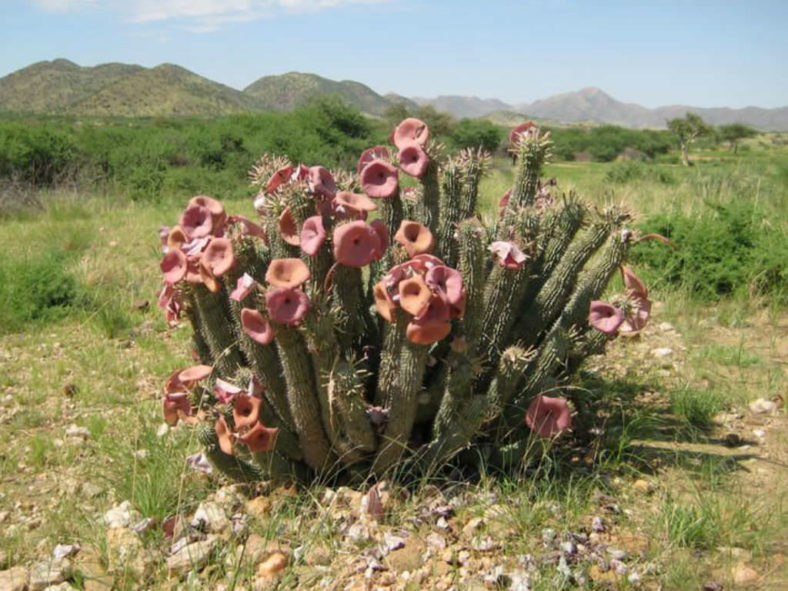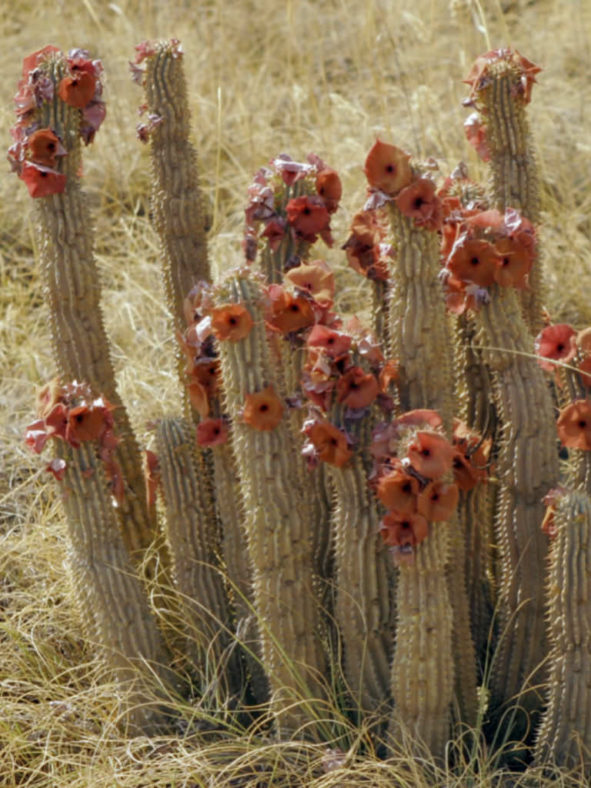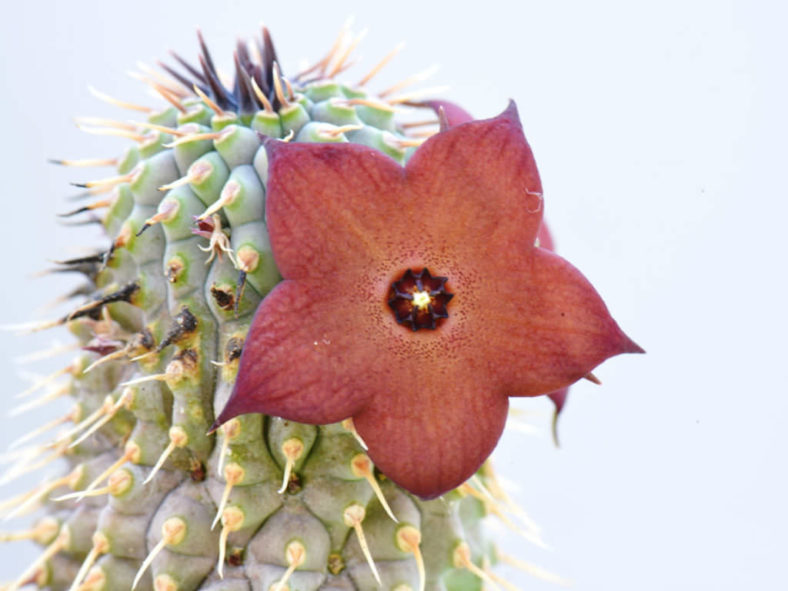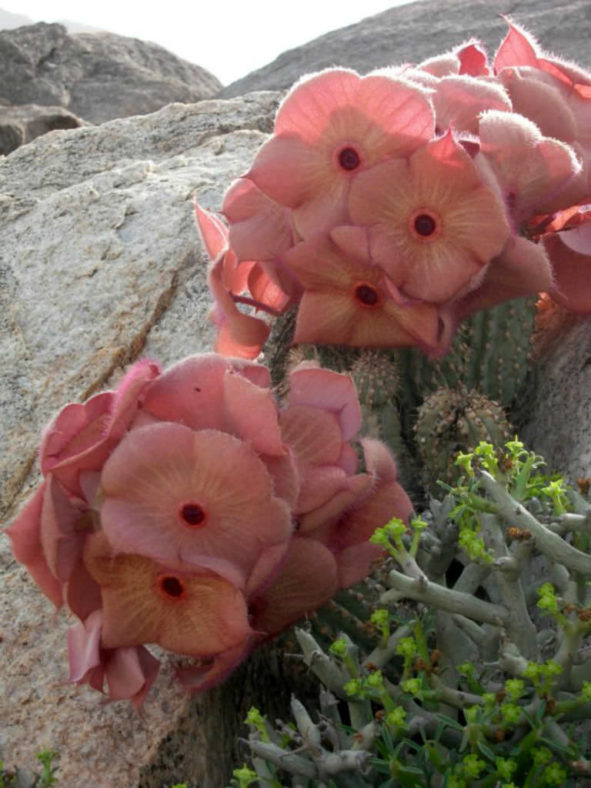Scientific Name
Hoodia currorii (Hook.) Decne.
Synonym(s)
Ceropegia currorii, Hoodia currorii subsp. currorii, Scytanthus currorii
Scientific Classification
Family: Apocynaceae
Subfamily: Asclepiadoideae
Tribe: Ceropegieae
Genus: Hoodia
Etymology
The specific epithet "currorii" (pronounced "KUR-or-ee-eye") honors Andrew Beveridge Curror (1811-1843), a British-born surgeon who served as surgeon on different ships of the British Royal Navy and plant collector in Angola from 1839 to 1843.
Origin
Hoodia currorii is native to west-central Namibia and southern Angola.
Description
Hoodia currorii is a succulent shrub with cylindrical, usually upright stems with 11 to 24 ribs consisting of prominent tubercles, each tipped with a sharp spine. The stems are gray-green, often brownish, and branch from the base, reaching up to 3.3 feet (1 m) in height and 3.2 inches (8 cm) in diameter.
The large flowers are rust red, covered with purple hairs, and appear in groups of 1 to 4 near the tips of the stems in mid-summer. They are saucer-shaped and can reach up to 4 inches (10 cm) in diameter. The fruits are pairs of fusiform, horn-like, pink to green follicles reaching up to 8.8 inches (22 cm) long and contain 100 to 250 seeds.

Hardiness
USDA hardiness zones 10a to 11b: from 30°F (-1.1°C) to 50°F (10°C).
How to Grow and Care
Stapeliads are relatively easy to grow. However, they should be treated as outdoor plants as they will easily rot indoors and cannot flower without exposure to outdoor temperature fluctuations. They should be grown under cover so that watering can be controlled. Stapeliads require a reasonable amount of sunlight to promote flowering and maintain a well-shaped plant. Very shady positions will produce very poor flowering.
These plants come from climates where they survive extremely high summer temperatures, so most growth is in spring and fall, with flowering in fall when the weather cools down. In the growing season, water is in moderation when needed, ensuring the soil is pretty dried out between waterings. Do not water between late fall and early spring.
The easiest and best way to propagate Stapeliads is from stem cuttings, which can be taken virtually throughout the year. Seed is also a method of propagation.
See more at How to Grow and Care for Stapeliads.
Subspecies
Links
- Back to genus Hoodia
- Succupedia: Browse succulents by Scientific Name, Common Name, Genus, Family, USDA Hardiness Zone, Origin, or cacti by Genus
Photo Gallery
Click on a photo to see a larger version.


